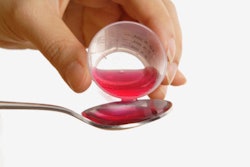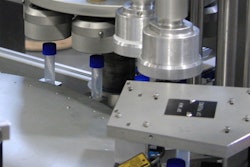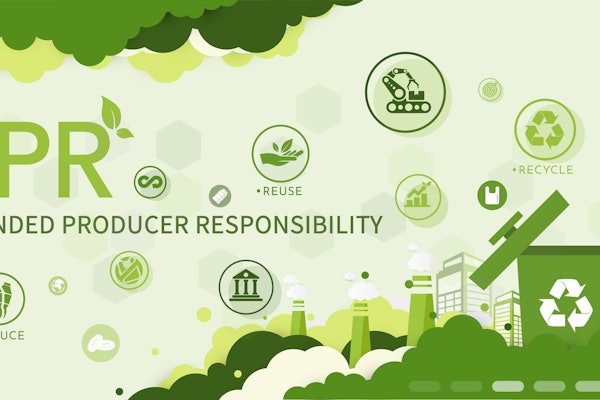
Food safety has become a high-profile issue in the United States. The U.S. Food and Drug Administration (FDA), the Centers for Disease Control and Prevention (CDC), and the Food Safety and Inspection Service (FSIS) met in late March 2010 to decide how best to measure progress in reducing foodborne illness. The assembly was called after President Obama's Food Safety Working Group emphasized the need for improvements in the methods used to evaluate efforts to tackle foodborne illnesses.
“To make our food safer, we must know as quickly as possible which foods are making people ill and why,” says United States Department of Agriculture (USDA) Deputy Under Secretary for Food Safety, Jerold R. Mande.
A report published in early 2010 by the Produce Safety Project (PSP) estimates acute foodborne illnesses cost the U.S. an estimated $152 billion per year in healthcare, lost time in the workplace and other economic measures. The study, “Health-Related Costs from Foodborne Illness in the United States,” by former FDA economist Robert L. Scharff further reports that about $39 billion of those losses can be attributed to fresh, canned, and processed produce.
As a result, the FDA is proposing standards that would trace every individual unit of product from farm to store shelf, with complete compliance mandated by 2012.
To help manufacturers respond to the current level of concern, processing and packaging exhibitors at this fall's PACK EXPO International 2010 will feature products to bolster safety efforts.
The need for product traceability
David Habib, product manager-strategic accounts and solutions for Markem-Imaje, explains in a recent white paper how product traceability became a necessity: “The product identification process was born out of international legislation requiring almost all food and drink products to display expiration dates. For some years, the need to add date codes to packages was viewed merely as an additional manufacturing cost, but a series of major food scares affecting such products as fresh and processed meat, seafood, baby food, ingredients, and even spring water, threw the question of product traceability into much sharper focus.
“Retailers began to be more forceful in their demands for product code accuracy, levying fines and other penalties on suppliers guilty of date and packaging errors. Manufacturers began to realize that an effective product ID and traceability process offers a measure of protection from such issues.”
Another white paper from Markem-Imaje offers help on implementing effective product traceability: “The ability to closely monitor the codes being printed on each product at all levels within the packaging line process is critical to most industries. Wrong, missing, or illegible codes could lead to fines, product recalls and, potentially, products not being accepted by the retailer or customer. All of these consequences could affect your brand perception for identity and quality. Wrong or illegible codes impinge on the brand in many ways including additional labor costs, product and packaging materials, disposal of the used materials, and packaging line time to potentially rework the product versus recoding and marking and verifying the mark on the product correctly the first time.”
In mid-2009, Markem-Imaje introduced its 9000 Series line of ink-jet coding printers for primary package coding. The line comprises three printers: 9020, 9030 and 9040. With single-jet and bi-jet printheads available and a wide choice of configurations, the 9000 Series is especially suitable for the food, beverage, pharmaceutical, and cosmetic industries.
Nose needed here
Several recent product recalls have been sparked by consumer complaints about moldy or musty odors associated with nausea, stomach pain, vomiting, and diarrhea. Microanalytics™, a subsidiary of MOCON, Inc. (), has developed improved approaches to identifying the source of industrial odors and can help guide strategies for neutralizing them. Microanalytics, founded in 1992, is dedicated to the continued improvement of practical sensory analysis.
“For example, imported wood pallets have come under fire for allegedly imparting odors to the products being stacked and distributed on them,” explains Fred Kuhrt, operations manager, Microanalytics. “Fingers are being pointed toward a chemical called tribromophenol (TBP), which continues to be used as a wood preservative in certain countries to control fungi and pests. A byproduct of microbial metabolism, 2, 4, 6-tribromoanisole (TBA), is responsible for the odor.”
Although TBP has been banned in the U.S., Europe, and Canada, it is still being used in South America. During times of domestic wood supply shortages, TBP-treated pallets can end up in the distribution channel. This can have significant impact on absorption of odors into food and pharmaceutical products.
“Because contamination can be instantaneous and can quickly spread to other pallets, truckloads, and even physical plants, it is key to identify the problem as quickly as possible to minimize financial impact and damage to brand equity,” Kuhrt says. “Warehouses should be particularly sensitive to any odd odors emanating from pallet loads.”
The health risks to mammals presented by exposure to TBP has been studied and given a Hazardous Materials Identification System (HMIS) rating of 2 in a range from 0 to 4, says Kuhrt. This level is defined as “A Temporary or Minor Injury May Occur.”
“In comparison to TBP, the HIMS rating for TBA in the area of Health is '0'. No testing has been done to my knowledge that would indicate that TBA at these low levels would be harmful to mammals. Keep in mind that the human nose, on average, will detect the presence of TBA at the sub-parts per trillion concentration.
“However, all off-odors that are of a concern to the public should be investigated to determine if there are health issues associated with them. In many cases, because of the low threshold of most off-odors, the nose will pick up the odors well in advance of the concentration being high enough to be classified as a health hazard,” he concludes.
Microanalytics' AromaTrax® GCMS-Olfactometry System combines state-of-the-art technology with the human nose to identify specific chemical odorants—down to parts per trillion or quadrillion. The AromaTrax® system has the capability of separating each chemical compound and delivering it to an odor “sniff port.” A human analyst, or “nose,” then evaluates each compound by grading its intensity and identifying its odor characteristic. The end result is an accurate and efficient way to characterize and identify critical odors.
“This is relatively complex technology,” says Kuhrt. “In addition to the technology that has gone into the instrumentation, we also have developed 'bookkeeping' software that allows the analyst to react quickly to the compound presented by giving them a way to log their findings immediately. Speed is critical, since analysts often have only a second or two to respond to one compound before the next one presents itself via the sniff port.”
Although the AromaTrax® unit is capable of identifying thousands of compounds, typically only a small number are responsible for most odor problems, Kuhrt explains. Further, the technology has wide-reaching applications, suitable for researching odor issues in any solid, liquid, or air sample—even the walls of the plant itself, which can retain odors, as well.
Microanalytics provides odor and flavor contract services to its customers, explains Kuhrt. “The work we do ranges from environmental concerns, to consumer product investigation, to identifying possible sites in a process where a contamination might have occurred. All testing is designed to meet the customers' specific needs. We also manufacture and sell the AromaTrax® Instrument to those companies that have more than an occasional need to identify odors and have the trained staffing to do the job. We provide the training as needed.”
Sanitary machine design
“From our perspective as a manufacturer of food packaging equipment, the food safety focus is on making the machine conducive to complete and thorough sanitation by the customer--the food processor,” says Jerry Hirsch, manager of marketing communications at Multivac Inc.. “This includes making it resistant to accumulation of solid and liquid contaminants.” Hirsh refers to the American Meat Institute's (AMI) 10 Principles of Sanitary Design. “This is one of the foundations upon which we base our hygienic design.”
Multivac's R535 high-capacity, versatile thermoform packaging machine has been designed for the utmost hygienic performance. The whole interior of the machine has been optimized for easy cleaning and maintenance tasks, as well as for cleaning-in-place (CIP). The sides of the machine open easily to access the interior parts, such as the chain guide, chain, and motor. The stainless-steel construction is completely washdown-compliant. In accordance with the AMI sanitary design standards, the machine's exterior has no corners or edges, so washdown water and any contaminants flow away easily. The R 535 offers cutoff lengths up to 1,300 mm and can cycle up to 30 times/min. The equipment can be integrated in PC- or server-based systems and features an intuitive, user-friendly control system with 30 languages.
Weighing, inspecting, and detecting
The Mettler Toledo Product Inspection Group, including the brands CI-Vision, Hi-Speed, and Safeline, provide machine vision inspection, checkweighing (as shown in the accompanying photo), metal detection, and X-ray inspection for many industries, including food, beverage, pharmaceutical, and chemical. John Uber, Mettler-Toledo Hi-Speed product manager, explains how checkweighing factors into protecting the food and pharmaceutical supply chains.
Checkweighers are used in primary processing, primary packaging, secondary packaging, and even bundled loads. Uber points out that all large retailers require checkweighing, as well as inspecting or detecting.
“Although underweight packages may create an unfavorable image for any company, in pharmaceuticals, any underfill poses a health hazard, since correct dosages are often critical to life itself,” Uber explains. “On the other hand, overfills can present problems in any processes downstream of filling. For example, retort may not heat to the required temperature to protect the security of the product.”
Metal detectors and X-ray systems are utilized to protect the consumer and further processsing equipment from damage by ensuring the product is free of physical contaminants in order, reports Robert Rogers, product manager, Mettler-Toledo Safeline. Often these systems are considered critical control points (CPP) within a production line. As such, the systems are continually monitored and tested to ensure they are working as intended.
Rogers says the goal is to prevent contamination, rather than merely identifying it. So it is not enough to simply have the systems in place; they must be incorporated into an overall contamination-prevention program that includes areas for frequency of testing, handling of rejected product, and tools to identify contamination at the source so processes can be modified to completely eliminate it. Both types of systems are used in processing and packaging. They are used to inspect incoming ingredients or material in various stages of production including final packaging.
While a metal detector reacts to conductivity in a product, X-ray inspection examines density. Either inspection system can be used on a pumped liquid or slurry products from processing to packaging. If a problem is detected in the product, a valve in the pipeline is opened to discharge it, or the line is stopped.
Machine vision systems can be used throughout the production process and play an important role in brand protection. Given the importance of the brand, damaged or malformed packaging, skewed labels or, in the worst-scenario, incorrect labels can severely impact the company image or trigger a costly recall.
Scott Stone, marketing manager, Mettler-Toledo CI-Vision, explains how machine vision systems can prevent such errors. “Label vision inspection systems use multiple cameras to accurately detect any of these issues at high line speeds.” He explains that vision systems can also be used to inspect empty or filled bottles of any shape.
Proprietary software CIVCore® from Mettler-Toledo CI-Vision can perform multiple inspection operations simultaneously such as proper neck shape, presence of foreign material in the bottle, fill level, misapplied cap, and the presence, positioning, and correctness of the label.
The examples highlighted above are just the beginning of the packaging and processing technology to protect foods and pharmaceuticals that will be featured at PACK EXPO International 2010. Complementing these exhibits will be innovative packaging materials and containers that can help brands protect product quality, extend shelf life, offer greater convenience and increase visual appearance and differentiation.
—Article from Pack Expo Showcase, a pre-show planner brought to you by Packaging World, Summit Media Group, Inc.
“To make our food safer, we must know as quickly as possible which foods are making people ill and why,” says United States Department of Agriculture (USDA) Deputy Under Secretary for Food Safety, Jerold R. Mande.
A report published in early 2010 by the Produce Safety Project (PSP) estimates acute foodborne illnesses cost the U.S. an estimated $152 billion per year in healthcare, lost time in the workplace and other economic measures. The study, “Health-Related Costs from Foodborne Illness in the United States,” by former FDA economist Robert L. Scharff further reports that about $39 billion of those losses can be attributed to fresh, canned, and processed produce.
As a result, the FDA is proposing standards that would trace every individual unit of product from farm to store shelf, with complete compliance mandated by 2012.
To help manufacturers respond to the current level of concern, processing and packaging exhibitors at this fall's PACK EXPO International 2010 will feature products to bolster safety efforts.
The need for product traceability
David Habib, product manager-strategic accounts and solutions for Markem-Imaje, explains in a recent white paper how product traceability became a necessity: “The product identification process was born out of international legislation requiring almost all food and drink products to display expiration dates. For some years, the need to add date codes to packages was viewed merely as an additional manufacturing cost, but a series of major food scares affecting such products as fresh and processed meat, seafood, baby food, ingredients, and even spring water, threw the question of product traceability into much sharper focus.
“Retailers began to be more forceful in their demands for product code accuracy, levying fines and other penalties on suppliers guilty of date and packaging errors. Manufacturers began to realize that an effective product ID and traceability process offers a measure of protection from such issues.”
Another white paper from Markem-Imaje offers help on implementing effective product traceability: “The ability to closely monitor the codes being printed on each product at all levels within the packaging line process is critical to most industries. Wrong, missing, or illegible codes could lead to fines, product recalls and, potentially, products not being accepted by the retailer or customer. All of these consequences could affect your brand perception for identity and quality. Wrong or illegible codes impinge on the brand in many ways including additional labor costs, product and packaging materials, disposal of the used materials, and packaging line time to potentially rework the product versus recoding and marking and verifying the mark on the product correctly the first time.”
In mid-2009, Markem-Imaje introduced its 9000 Series line of ink-jet coding printers for primary package coding. The line comprises three printers: 9020, 9030 and 9040. With single-jet and bi-jet printheads available and a wide choice of configurations, the 9000 Series is especially suitable for the food, beverage, pharmaceutical, and cosmetic industries.
Nose needed here
Several recent product recalls have been sparked by consumer complaints about moldy or musty odors associated with nausea, stomach pain, vomiting, and diarrhea. Microanalytics™, a subsidiary of MOCON, Inc. (), has developed improved approaches to identifying the source of industrial odors and can help guide strategies for neutralizing them. Microanalytics, founded in 1992, is dedicated to the continued improvement of practical sensory analysis.
“For example, imported wood pallets have come under fire for allegedly imparting odors to the products being stacked and distributed on them,” explains Fred Kuhrt, operations manager, Microanalytics. “Fingers are being pointed toward a chemical called tribromophenol (TBP), which continues to be used as a wood preservative in certain countries to control fungi and pests. A byproduct of microbial metabolism, 2, 4, 6-tribromoanisole (TBA), is responsible for the odor.”
Although TBP has been banned in the U.S., Europe, and Canada, it is still being used in South America. During times of domestic wood supply shortages, TBP-treated pallets can end up in the distribution channel. This can have significant impact on absorption of odors into food and pharmaceutical products.
“Because contamination can be instantaneous and can quickly spread to other pallets, truckloads, and even physical plants, it is key to identify the problem as quickly as possible to minimize financial impact and damage to brand equity,” Kuhrt says. “Warehouses should be particularly sensitive to any odd odors emanating from pallet loads.”
The health risks to mammals presented by exposure to TBP has been studied and given a Hazardous Materials Identification System (HMIS) rating of 2 in a range from 0 to 4, says Kuhrt. This level is defined as “A Temporary or Minor Injury May Occur.”
“In comparison to TBP, the HIMS rating for TBA in the area of Health is '0'. No testing has been done to my knowledge that would indicate that TBA at these low levels would be harmful to mammals. Keep in mind that the human nose, on average, will detect the presence of TBA at the sub-parts per trillion concentration.
“However, all off-odors that are of a concern to the public should be investigated to determine if there are health issues associated with them. In many cases, because of the low threshold of most off-odors, the nose will pick up the odors well in advance of the concentration being high enough to be classified as a health hazard,” he concludes.
Microanalytics' AromaTrax® GCMS-Olfactometry System combines state-of-the-art technology with the human nose to identify specific chemical odorants—down to parts per trillion or quadrillion. The AromaTrax® system has the capability of separating each chemical compound and delivering it to an odor “sniff port.” A human analyst, or “nose,” then evaluates each compound by grading its intensity and identifying its odor characteristic. The end result is an accurate and efficient way to characterize and identify critical odors.
“This is relatively complex technology,” says Kuhrt. “In addition to the technology that has gone into the instrumentation, we also have developed 'bookkeeping' software that allows the analyst to react quickly to the compound presented by giving them a way to log their findings immediately. Speed is critical, since analysts often have only a second or two to respond to one compound before the next one presents itself via the sniff port.”
Although the AromaTrax® unit is capable of identifying thousands of compounds, typically only a small number are responsible for most odor problems, Kuhrt explains. Further, the technology has wide-reaching applications, suitable for researching odor issues in any solid, liquid, or air sample—even the walls of the plant itself, which can retain odors, as well.
Microanalytics provides odor and flavor contract services to its customers, explains Kuhrt. “The work we do ranges from environmental concerns, to consumer product investigation, to identifying possible sites in a process where a contamination might have occurred. All testing is designed to meet the customers' specific needs. We also manufacture and sell the AromaTrax® Instrument to those companies that have more than an occasional need to identify odors and have the trained staffing to do the job. We provide the training as needed.”
Sanitary machine design
“From our perspective as a manufacturer of food packaging equipment, the food safety focus is on making the machine conducive to complete and thorough sanitation by the customer--the food processor,” says Jerry Hirsch, manager of marketing communications at Multivac Inc.. “This includes making it resistant to accumulation of solid and liquid contaminants.” Hirsh refers to the American Meat Institute's (AMI) 10 Principles of Sanitary Design. “This is one of the foundations upon which we base our hygienic design.”
Multivac's R535 high-capacity, versatile thermoform packaging machine has been designed for the utmost hygienic performance. The whole interior of the machine has been optimized for easy cleaning and maintenance tasks, as well as for cleaning-in-place (CIP). The sides of the machine open easily to access the interior parts, such as the chain guide, chain, and motor. The stainless-steel construction is completely washdown-compliant. In accordance with the AMI sanitary design standards, the machine's exterior has no corners or edges, so washdown water and any contaminants flow away easily. The R 535 offers cutoff lengths up to 1,300 mm and can cycle up to 30 times/min. The equipment can be integrated in PC- or server-based systems and features an intuitive, user-friendly control system with 30 languages.
Weighing, inspecting, and detecting
The Mettler Toledo Product Inspection Group, including the brands CI-Vision, Hi-Speed, and Safeline, provide machine vision inspection, checkweighing (as shown in the accompanying photo), metal detection, and X-ray inspection for many industries, including food, beverage, pharmaceutical, and chemical. John Uber, Mettler-Toledo Hi-Speed product manager, explains how checkweighing factors into protecting the food and pharmaceutical supply chains.
Checkweighers are used in primary processing, primary packaging, secondary packaging, and even bundled loads. Uber points out that all large retailers require checkweighing, as well as inspecting or detecting.
“Although underweight packages may create an unfavorable image for any company, in pharmaceuticals, any underfill poses a health hazard, since correct dosages are often critical to life itself,” Uber explains. “On the other hand, overfills can present problems in any processes downstream of filling. For example, retort may not heat to the required temperature to protect the security of the product.”
Metal detectors and X-ray systems are utilized to protect the consumer and further processsing equipment from damage by ensuring the product is free of physical contaminants in order, reports Robert Rogers, product manager, Mettler-Toledo Safeline. Often these systems are considered critical control points (CPP) within a production line. As such, the systems are continually monitored and tested to ensure they are working as intended.
Rogers says the goal is to prevent contamination, rather than merely identifying it. So it is not enough to simply have the systems in place; they must be incorporated into an overall contamination-prevention program that includes areas for frequency of testing, handling of rejected product, and tools to identify contamination at the source so processes can be modified to completely eliminate it. Both types of systems are used in processing and packaging. They are used to inspect incoming ingredients or material in various stages of production including final packaging.
While a metal detector reacts to conductivity in a product, X-ray inspection examines density. Either inspection system can be used on a pumped liquid or slurry products from processing to packaging. If a problem is detected in the product, a valve in the pipeline is opened to discharge it, or the line is stopped.
Machine vision systems can be used throughout the production process and play an important role in brand protection. Given the importance of the brand, damaged or malformed packaging, skewed labels or, in the worst-scenario, incorrect labels can severely impact the company image or trigger a costly recall.
Scott Stone, marketing manager, Mettler-Toledo CI-Vision, explains how machine vision systems can prevent such errors. “Label vision inspection systems use multiple cameras to accurately detect any of these issues at high line speeds.” He explains that vision systems can also be used to inspect empty or filled bottles of any shape.
Proprietary software CIVCore® from Mettler-Toledo CI-Vision can perform multiple inspection operations simultaneously such as proper neck shape, presence of foreign material in the bottle, fill level, misapplied cap, and the presence, positioning, and correctness of the label.
The examples highlighted above are just the beginning of the packaging and processing technology to protect foods and pharmaceuticals that will be featured at PACK EXPO International 2010. Complementing these exhibits will be innovative packaging materials and containers that can help brands protect product quality, extend shelf life, offer greater convenience and increase visual appearance and differentiation.
—Article from Pack Expo Showcase, a pre-show planner brought to you by Packaging World, Summit Media Group, Inc.





















